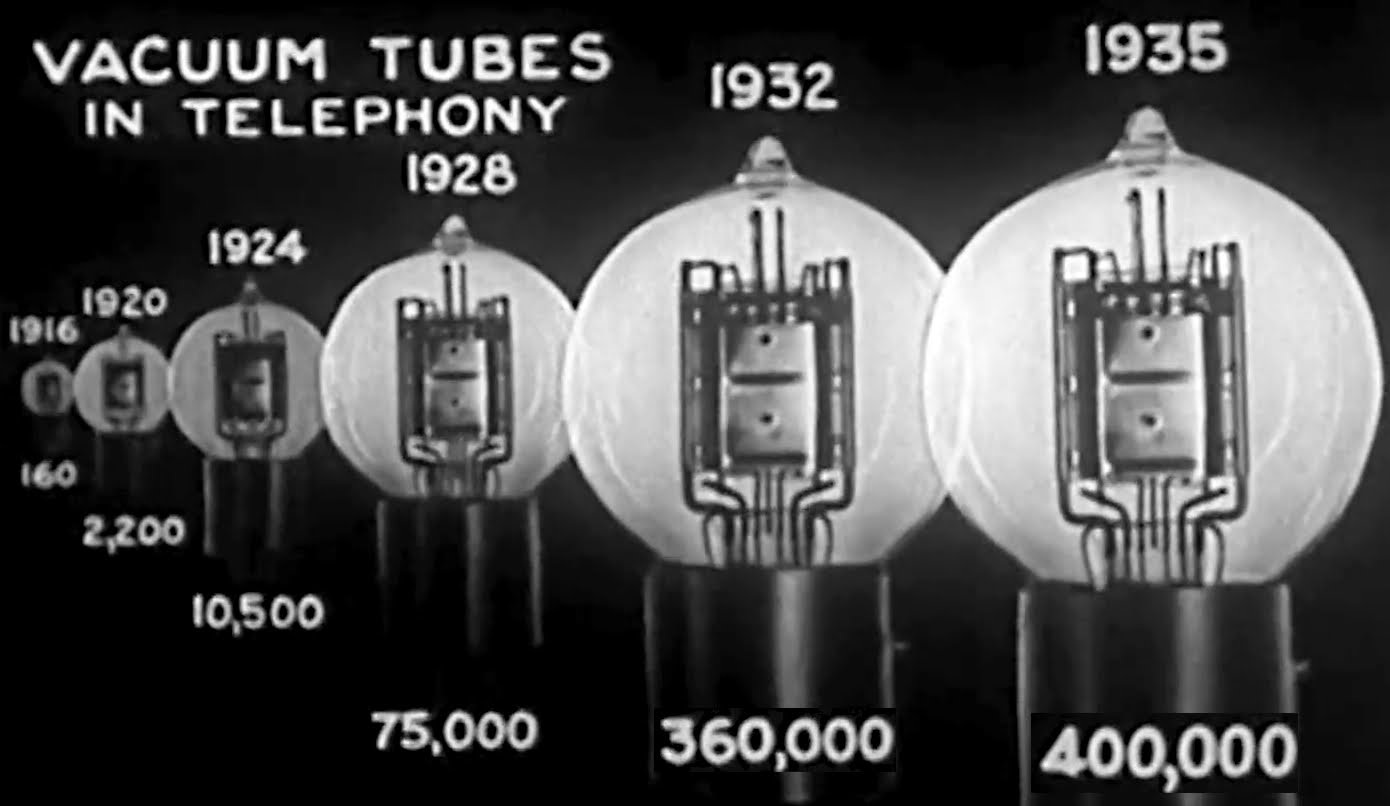Telephones & Telephony playlist:
more at
“History of telephone development from 1877 to 1935.”
Reupload of a previously uploaded film with improved video & sound.
Public domain film from the Library of Congress Prelinger Archives, slightly cropped to remove uneven edges, with the aspect ratio corrected, and one-pass brightness-contrast-color correction & mild video noise reduction applied.
The soundtrack was also processed with volume normalization, noise reduction, clipping reduction, and/or equalization (the resulting sound, though not perfect, is far less noisy than the original).
more at
The New York Times,
February 3, 1877, p.2:
THE TELEPHONE.
HISTORY OF THE INSTRUMENT
AND ITS INVENTOR–
A CONVERSATION BY WIRE
ON WEDNESDAY BETWEEN BOSTON
AND A NEIGHBORING TOWN…
From the Boston Transcript, Feb. 1.
At noon yesterday a distinguished party of gentlemen were assembled at the office of the Boston Rubber Shoe Company on Congress street in order to witness a series of experiments performed on the telephone between the inventor, Prof. A. Graham Bell, here, and his associate, Mr. Thomas A. Watson, at the residence of Mr. Converse at Maiden, about six miles distant.
– Prof. Bell had been invited by some of our most prominent citizens to give a practical demonstration of the most recent developments of an invention which, in accordance with its name, has already sounded far and wide the fame of the telephone.
– The telephone, in its present form, consists of a powerful, compound, permanent magnet, to the poles of which are attached ordinary telegraph coils of insulated wire. In front of the poles, surrounded by these coils of wire, is placed a diaphragm of iron. A mouthpiece to converge the sound upon this diaphragm substantially completes the arrangement.
– As is well known, the motion of steel or iron in front of the poles of a magnet creates a current of electricity in coils surrounding the poles of the magnet, and the duration of this current of electricity coincides with the duration of the motion of the steel or iron moved or vibrated in the proximity of the magnet.
– When the human voice causes the diaphragm to vibrate, electrical undulations are induced in the coils environing the magnets, precisely analogous to the undulations of the air produced by that voice.
– These coils are connected with the line wire, which may be of any length, provided the insulation be good. The undulations which are induced in these coils travel through the line wire, and, passing through the coils of an instrument of precisely similar construction at the distant station, are again resolved into air undulations by the diaphragm of this instrument…
– The experiments yesterday were as follows: Telephones having been connected with the private telegraphic line of the Boston Rubber Shoe Company, and the operators at either end having taken up their station, conversation at once commenced. Stationed at the Boston end of the wire, Prof. Bell requested Mr. Watson to speak in loud tones, with a view of enabling the entire company at once to distinguish the sounds.
– This was so successful that a smile of mingled pleasure and surprise played on the features of those present. That it, however, might not be supposed that loud speaking was essential to intelligibility, Mr. Bell explained that soft tones could be heard across the wires even more distinctly than loud utterances, even a whisper being audible. In confirmation of this statement, Mr. Watson commenced speaking in turn with each member of the company, and after the efficiency of this method had been proved to the satisfaction of all, he took up a newspaper and informed the assemblage that gold had closed the previous evening in New-York at 105 5/8. As there were quite a number of business men present, the effect that this practical demonstration of the value of the telephone produced can scarcely be exaggerated.
– Other passages from the daily journals were then given, and by this time the desire for conversation having become general, Mr. Watson was plied with questions such as: “Is it thawing or freezing at Maiden?” “Who will be the next President?” &c.
– It was remarkable that Mr. Watson was able to distinguish between the voices at the Boston end, he calling at least one gentleman by name as soon as the latter commenced speaking…

